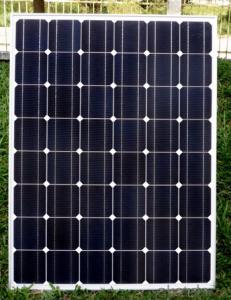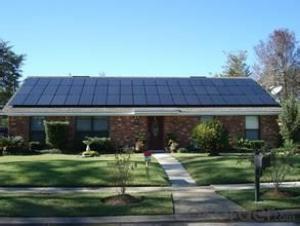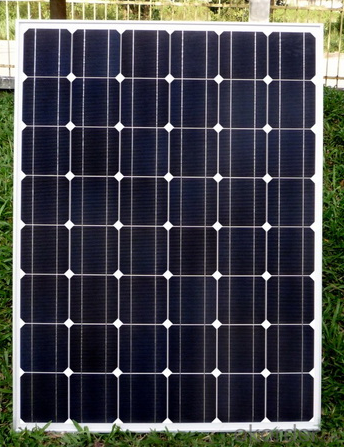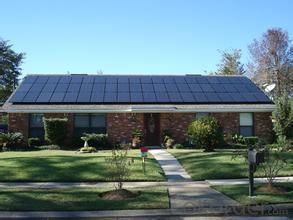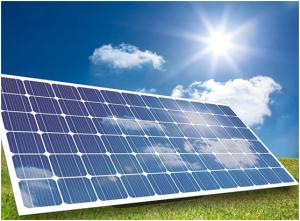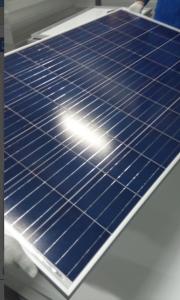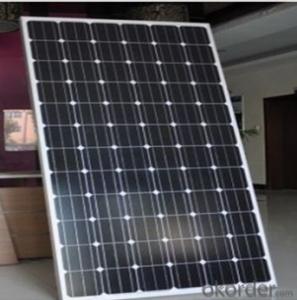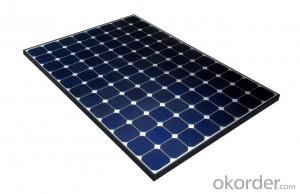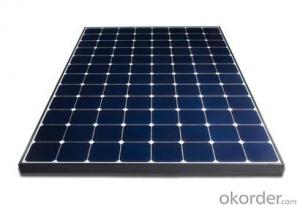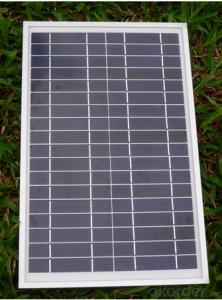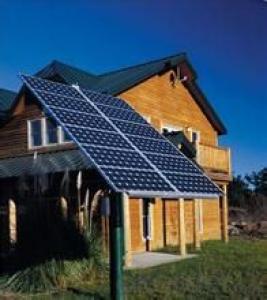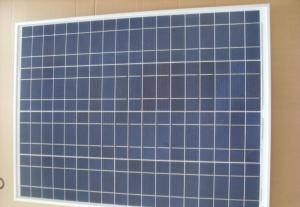Solar Panels Connecticut - Poly Solar Panel 300w A Grade with Cheapest Price
- Loading Port:
- Shanghai
- Payment Terms:
- TT OR LC
- Min Order Qty:
- 100 watt
- Supply Capability:
- 50000 watt/month
OKorder Service Pledge
OKorder Financial Service
You Might Also Like
Specification
Poly Solar Panel 300W A Grade with Cheapest Price
Product description
60 cell multi-crystalline solar module. 40mm natural anodised frame. IP65 rated Jbox, 1m solar cable and a pair of MC4 connectors.TÜV SÜD,SABS ISO 9001:2008 certified.
Micro-inverted solar panels are wired in parallel which produces more output than normal panels which are wired in series with the output of the series determined by the lowest performing panel (this is known as the "Christmas light effect"). Micro-inverters work independently so each panel contributes its maximum possible output given the available sunlight.[6]
Solar panel conversion efficiency, typically in the 20 percent range, is reduced by dust, grime, pollen, and other particulates that accumulate on the solar panel. "A dirty solar panel can reduce its power capabilities by up to 30 percent in high dust/pollen or desert areas", says Seamus Curran, associate professor of physics at the University of Houston and director of the Institute for NanoEnergy, which specializes in the design, engineering, and assembly of nanostructures.[16]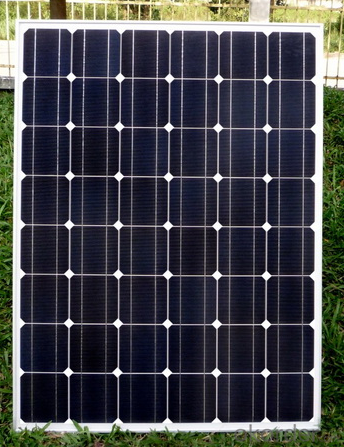
Application
Industrial
Commercial
Residential
Product feather
solar panel refers to a panel designed to absorb the sun's rays as a source of energy for generating electricity or heating.
A photovoltaic (in short PV) module is a packaged, connected assembly of typically 6×10 solar cells. Solar Photovoltaic panels constitute the solar array of a photovoltaic system that generates and supplies solar electricityin commercial and residential applications. Each module is rated by its DC output power under standard test conditions, and typically ranges from 100 to 365 watts. The efficiency of a module determines the area of a module given the same rated output – an 8% efficient 230 watt module will have twice the area of a 16% efficient 230 watt module. There are a few solar panels available that are exceeding 19% efficiency. A single solar module can produce only a limited amount of power; most installations contain multiple modules. A photovoltaic system typically includes a panel or an array of solar modules, a solar inverter, and sometimes a battery and/or solar tracker and interconnection wiring.
Packaging
24-26pcs into carton 312pcs for 20 foot container 712pcs for 40 foot container.
- Q: Does anybody know if there are any courses for solar panel installation, and/or what trades you need for this position?
- What you ought to recognize will depend on WHAT sort of installations you're going to be operating with. In regular, for business you wish to have fundamental mechanics and wiring. For house, you may additionally want a few carpentry, roofing, preserving structural integrity, plumbing, and so on. In side it additionally will depend on what sort of sun installations you're doing, (vigour, air warmers, water warmers, and so on.)
- Q: What direction do solar panels usually point? North? East? South? West?
- I can't believe how many people posted wrong answers to this. Where are they looking? What are they thinking? In the northern hemisphere, solar panels are ALWAYS oriented due south. In the southern hemisphere, face them due north. I am typing on a computer that is running on a solar electric system that supplies my whole house. Been this way for years. So it works.
- Q: Can solar panels be used in countries with limited sunlight?
- Yes, solar panels can still be used in countries with limited sunlight. While solar panels are most effective in areas with abundant sunlight, they can still generate electricity in countries with limited sunlight. Although the energy output might be lower compared to sunnier regions, advancements in solar technology, such as increased efficiency and better storage solutions, allow solar panels to be a viable renewable energy option in countries with limited sunlight.
- Q: Can solar panels be used in areas with high winds?
- Yes, solar panels can be used in areas with high winds. However, it is important to ensure that the solar panel installation is designed and built to withstand the specific wind conditions of that area. This may involve using appropriate mounting systems, securing the panels properly, and considering the orientation and tilt angles. Additionally, selecting high-quality materials and conducting regular maintenance can help ensure the longevity and performance of the solar panels in high wind areas.
- Q: Are there any tax credits available for installing solar panels?
- Yes, there are tax credits available for installing solar panels. The federal government offers a Solar Investment Tax Credit (ITC), which allows homeowners and businesses to deduct a percentage of the cost of purchasing and installing solar panels from their federal taxes. Additionally, some states and local jurisdictions also provide their own incentives and tax credits for solar panel installations.
- Q: What specification of solar panel would I need to power a laptop every day? I would need to use it for about 0 hours or so every day. I don't know anything about solar panels, but I am seriously thinking of getting one now and don't know who to ask.
- I okorder / says they have DC to DC solutions from 2 V for most laptops.
- Q: Okay, I think I understand what I'm doing, but I want to set up some solar panels on the roof of my garage, the building that gets the most sun, and I want to make sure all my math is correct in determining number of megawatts per year. However, my knowledge of electrical terms in quite n00bish, to say the least.Here is what I think I should be doing.The solar cells come at .75 Watts average power.I will install 4 panels of 64 cells each, with a total of 256 cells.
- For comparison, 36 of these make a normal 2V x 50W panel. Note they are not tabbed. This means you have to find a way to connect them yourself. The tabs are probably spot welded on by the suppliers. A supplier below has kits of these with tabs, as needed to connect them together. These are not suitable for grid connect, because the higher voltage needed makes do it yourself panels a dangerous and litigious thing to have on your roof. Maybe you could buy a smaller pack from the link below to compare tabbed and untabbed and work out what to do. Your power calculation is a bit incorrect because the sun is only present some of the time. The 36 cell module would produce 50W when square on to the full sun. The sun may be out for around 2h a day in some places and times of the year. However it is the equivalent of 5h full sun, because of the changing angle throughout the day. Look this up on the internet for your region. Temperate zones may be a lot less. One pack in your link is 36x3 = 08 cells. Thus 50W per pack x 5h a day gives 750Wh per day and 274KWh/y. In reality it will always be less because of regions, weather, clouds, dust, inefficiencies, aging of cells.
- Q: I want to get definate instructions on how to make the components and convert my home to solar energy. I know I could hire some one to do this, but frankly I do not have the funds at my disposal to do it. I thought if I could find detailed instuctions I could slowly do it myself (with my husband's help). I have looked into loans for this purpose to no avail. Finding the information on the net could take forever! If anyone knows a site that would give me the information or even a hint on how to start? Any help will be appreciated, but if you have any good links to good information please share them with me..Thanks
- Typical solar panels like Engineer describes require a lot of space. A single panel may only light a single light bulb. You may want to look into a different way of generating electricity with solar, it doesn't use a cell to turn the sunlight into electricity, instead it uses mirrors to focus the sunlight onto a pipe between the mirrors. The heat causes water or another liquid in the pipe to boil and the steam created turns a turbine that produces the electricity. It has the potential to be less high-tech, more forgiving of minor design and structural problems and more affordable. I don't know of any system that is privately available but you can get more info at the link below. They're building a full test facility in Nevada right now. You could presumably cobble something like this up on your own.
- Q: I live in a higher LATITUDE so in the winter months, there is a limitation in the amount of sunlight available, but will this impediment restrict the ability of solar panels to function due to the lack of sunlight involved?
- Solar panels work in sunlight, so obviously the more sunlight, the more power. However, ironically, solar panels don't like heat, so they work better in the cold. Higher altitudes often have more sunlight, due to less crud in the atmosphere, and are often colder than lower altitudes, so you will often get better performance in higher locations. We have solar systems working in every continent in the world, including near both the north and south pole.
- Q: Do LED lamps ever go bad?What's the life expectancy of solar panels?
- ED stands for light emitting diode, an electronic device which turns electric power into light with nearly perfect efficiency. When used in flashlight or othe battery powered lights, they will provide equal amounts of light for 00 times as long as ordinary incandescent light bulbs. Because of there very low power usage, led light are ideal for solar powered lighting systems. They are now made in every form and size, for DC or AC power, for homes, automobiles and outdoor lighting. Although they cost more, the savings from 20 year life expectancy and % power use mean savings of 95% over several years. sunsourcepower
Send your message to us
Solar Panels Connecticut - Poly Solar Panel 300w A Grade with Cheapest Price
- Loading Port:
- Shanghai
- Payment Terms:
- TT OR LC
- Min Order Qty:
- 100 watt
- Supply Capability:
- 50000 watt/month
OKorder Service Pledge
OKorder Financial Service
Similar products
Hot products
Hot Searches
Related keywords
